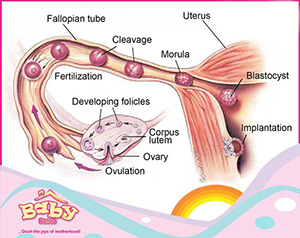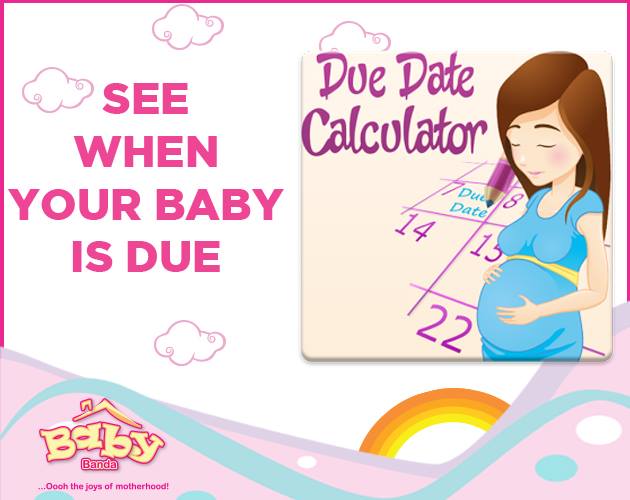Understanding Ovulation is the key to conception as this is the best time to have sex to get pregnant. By understanding your ovulation cycle, you can target the optimal time frame for conception.
OVULATION BASICS
Ovulation is the point when an egg is released from the ovary so that it may travel down the fallopian tube and become fertilized by the waiting sperm. During ovulation, the lining of the uterine wall thickens so that a fertilized egg can become implanted and continue the pregnancy.
ESSENTIAL OVULATION FACTS
- An egg is only available for fertilization for 12 to 24 hours
- Usually, only 1 egg is released during each cycle
- Ovulation often rotates between ovaries
- Light bleeding may occur during ovulation
- It is possible to ovulate even if a period has not occurred
When does ovulation occur?
Technically, ovulation should occur around 14 days before your period. However, in terms of tracking your ovulation, it may be better to think of it as occurring in the middle, about halfway-between two periods for an average 28-day cycle. Assuming you have a 28-day cycle each month. If you count 14 days backwards from the first day of any period (the day bleeding starts), or if you count 14 days forwards from the first day of any period, you will find that ovulation should occur on day 14 or 15 or your cycle — either way, you count. Because 14, the average day of ovulation, is exactly half of a 28-day cycle; it is mathematically in the middle. However, every woman is different. Your cycles could be 32 days on average or even shorter. On top of that, cycles are not always the same length each month. One month may be longer than the next. Most times there is only a small chance ovulation will occur on day 14 of your cycle.
It is therefore quite hard to predict with exact certainty the day ovulation will occur in a given month going strictly by when your last period started. Remember, your last period was triggered by the timing of your last ovulation and has no relation to the next ovulation. You could be early or late this month.
FERTILE WINDOW
When should I time sex for the best chance of getting pregnant? Again, it all relates to your ovulation. If we can pinpoint when ovulation will occur, according to statistical data, there are exactly 6 days each cycle where you have a chance of conceiving. They include the day of ovulation and the 5 days just before ovulation. Outside of this window, your chances drop to near zero.
This critical six-day window is commonly referred to as your fertile window. Knowing, when this six-day window occurs in your cycle, is important to increase your chance of getting pregnant. Since your day of ovulation varies month to month, your 6-day fertile window varies and is just as hard to predict based off of your last period. A much better approach is to look at all the days of the month and see, based on statistical data, what the probability is of being in your 6-day fertile window for each day.
THE FERTILE PHASE OF YOUR CYCLE
The fertile phase for most women occurs during those 16 days between day 6 and day 21 of the cycle. Focus your efforts on the fertile phase of your cycle— between days 7 and day 20 (or between day 6 and day 21 if you want a little extra insurance). However, if you have a history of irregular cycles, your fertile phase can be much longer. You must learn to recognize your signs of ovulation so at least you know when ovulation has occurred and conception opportunities are over for that month.
SIGNS OF OVULATION
Ovulation varies from woman to woman and even cycle to cycle. However, the biological changes that occur during ovulation are fairly consistent for each person. There are primary symptoms that should be experienced by all women and you should be able to readily spot.
Primary Symptoms of Ovulation:
- Change in cervical mucus becoming more slippery
- Spike in basal body temperatures
- Change in cervical position or firmness
Secondary Symptoms of Ovulation:
- Light spotting
- Cramping
- Pain on one side
- Bloating
- Breast tenderness
- Increased libido
- A heightened sense of smell, taste or even vision
You may not notice any of these secondary symptoms of your ovulation and that is OK. If you do notice, then these signs can help you track your ovulation. Some women are good enough at recognizing their symptoms that they can tell soon enough in advance of ovulation when to target their sexual encounters for that critical time in the fertile window two days before ovulation.
TRACKING YOUR OVULATION
Knowing when your ovulation occurs makes it easy for couples to target when to have sex. Tracking ovulation can easily become clinical and make sex more of a chore if you are not protective of the relationship and only focused on the job of getting pregnant. It is important to keep the romance and spontaneity in a relationship.
MODIFIED STANDARD DAYS METHOD
It is recommended that couples use a Modified Standards Days method of targeting fertility with a 14-day fertile phase.
Menstruation Infertile: Day 1–6
Fertile: Day 7–20
Infertile: From Day 21
This method is an easy way to greatly increase your chances without the stress and complications of other methods. Use the modified standards days’ method and commit to having sex 4 to 7 times during your 14-day fertile phase.
Modifies Standard days Method Schedule
- On the first day of your period (the first day you notice bleeding) mark your calendar. This is Day 1 of your cycle.
- Count forward 6 more days. This is day 7 of your cycle. This is the start of your Fertile Phase.
- Mark or colour in your 14-day fertile phase including all the days between day 7 and day 20 of your cycle. (Include both day 7 and day 20). If you want, you can add day 6 and day 21 for extra insurance.
- Now, aim to have sex every other day. The reason you want to have sex every other day is to maximize the health of his sperm. Too much sex can result in immature sperm and long bouts without sex can lead to ejaculating fluid with dead or weakened sperm. With sperm living 2, 3 and even up to 5 days, sex every other day gives you plenty of sperm for conception to occur. Keep in mind, this method is most reliable for women with cycles shorter than 32 days. Women with long cycles or who are highly irregular will need to track ovulation more closely.
However, for the average couple, this method is absolutely the best and easiest way of targeting ovulation and maximizing your efforts for getting pregnant.














